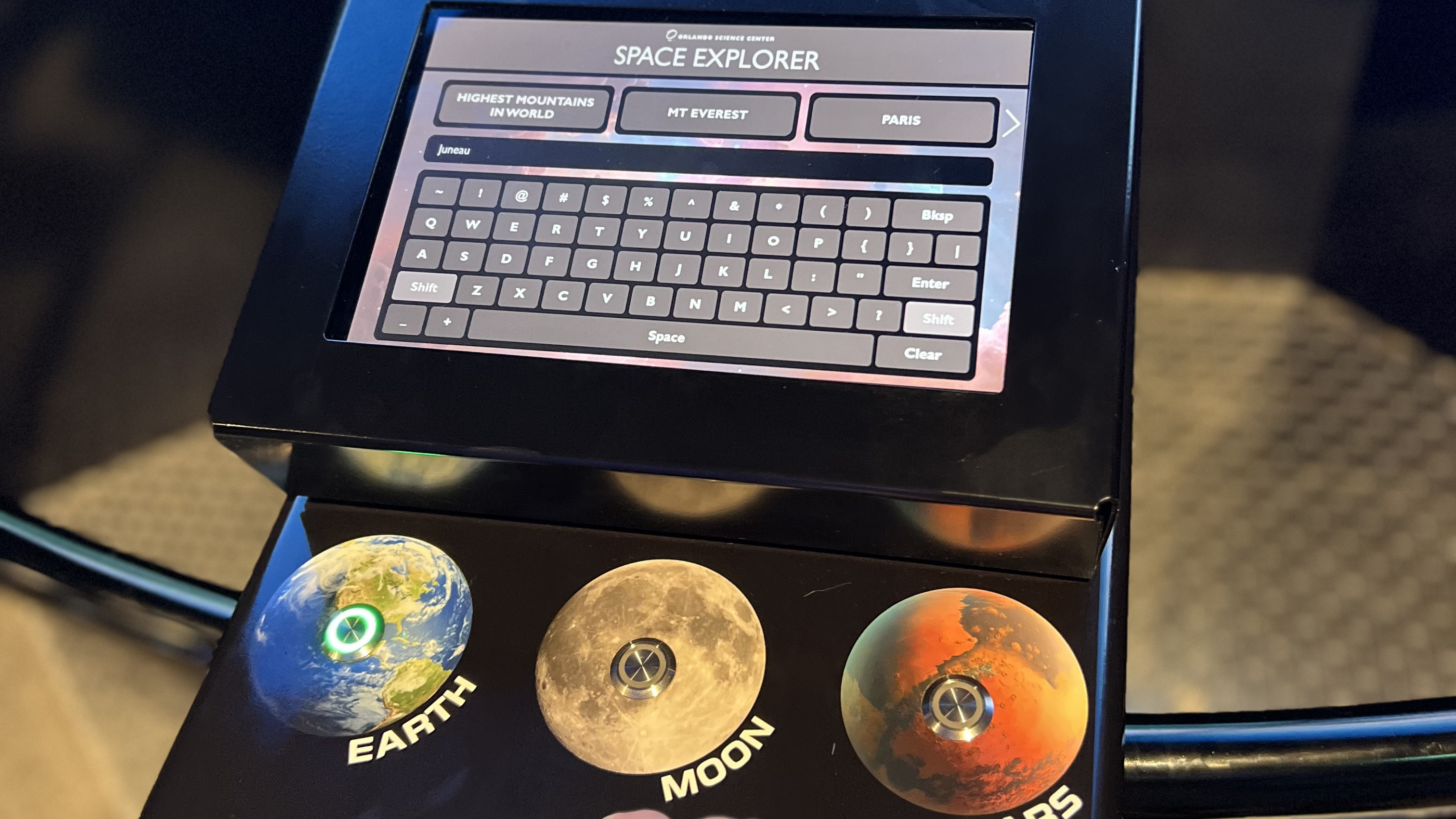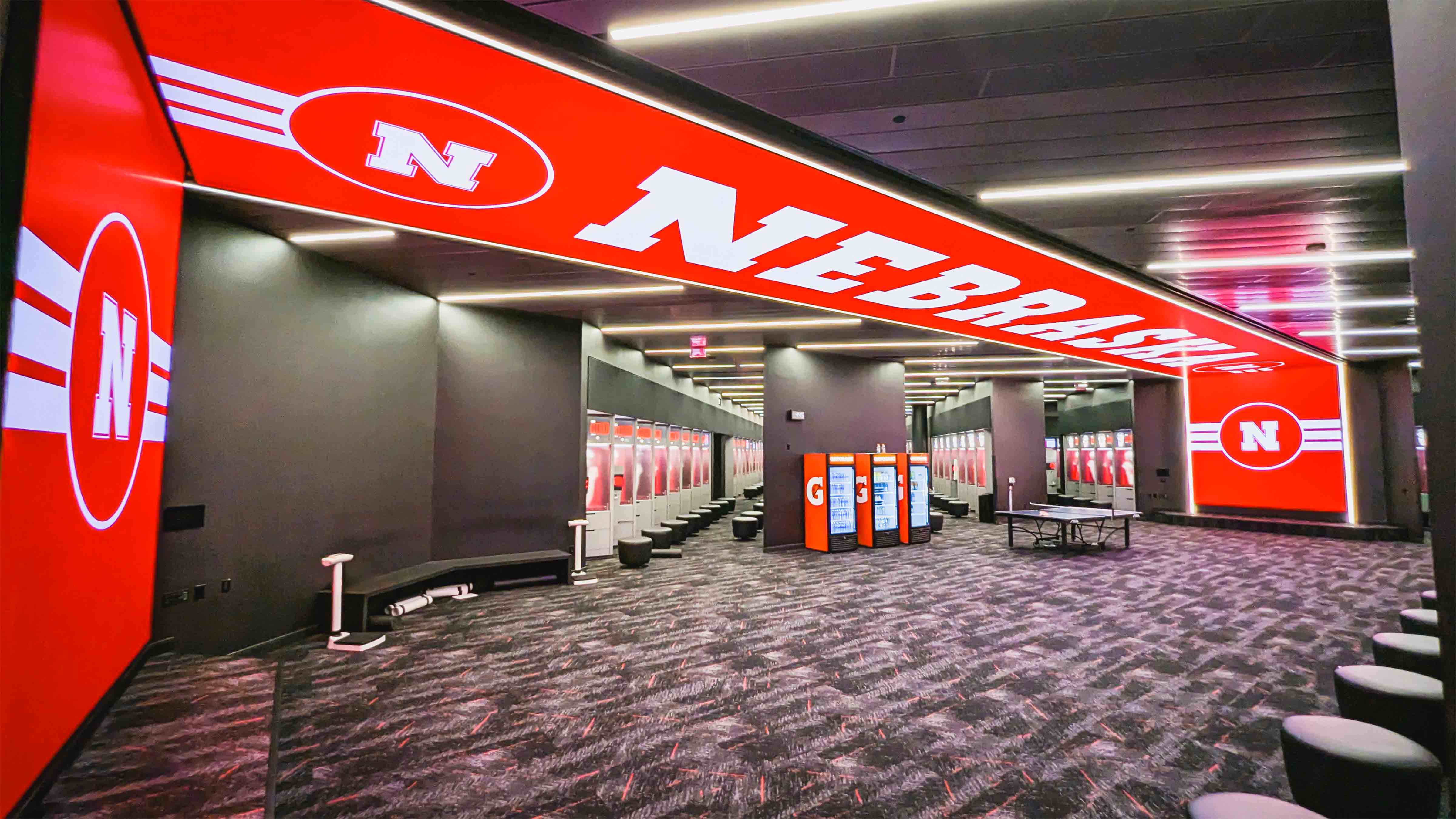Red Dot Digital Media recently teamed with the Phenix Design Group to bring an interactive space exploration experience to life at the Orlando Science Center (OSC), a Florida-based science museum that provides experience-based opportunities for visitors to learn about science and technology.
For the past two decades, Phenix provided OSC with interactive video kiosks and simulators for the museum’s annual Otronicon/SPARK STEM Fest events. Using the Space Explorer—an immersive kiosk comprising three vertically oriented screens— users were able to explore key parts of our solar system using Google Earth. Following a successful redesign of the temporary kiosks for the events, OSC decided to add the Space Explorer kiosk to the museum’s permanent collection. When Phenix set out to update the design for use as a permanent exhibit, they turned to Red Dot Digital Media to engineer an integrated hardware and software solution to power this next-generation interactive kiosk.
“We very much enjoyed the collaboration with Darryl Kuder and his team,” said Steve Handy, co-owner of the Phenix Design Group. “Red Dot was thorough and patient with us as we worked to get this project built and deployed on time.”
Given that the Space Explorer experience delivers Google Earth content via a PC, it was necessary to tailor the experience to give visitors control over the experience, without also giving them the ability to unintentionally (or intentionally) alter feature settings and other controls. Therefore it was necessary to limit functionality visitors could access on their own, while reserving higher-level functions for OSC technical staff.
Additionally, earlier iterations of the kiosk relied on a Windows-based system which struggled to meet the processing demands of the system due to Microsoft Windows’ excessive resource utilization for telemetry and other peripheral processes that were not critical to the museum experience.
Phenix engaged Red Dot to design an interactive experience to power the third-generation Space Explorer kiosk. Red Dot custom-built a Linux PC designed specifically to deliver the speed and graphics capabilities sought by OSC, with the reliability and durability required for daily use in a museum setting. The PC manages all custom application interaction between the touchscreen, LED buttons and video outputs.

"Phenix’s request for this type of build was an opportunity we simply couldn’t pass up. It allowed us to flex our custom programming expertise while designing a creative hardware solution to deliver the high-quality results they envisioned,” said Darryl Kuder, president of Red Dot Digital Media. “We look forward to helping them roll out more of these across the country this year."
User input is captured via a 15.6-inch Bluefin V-Series frameless touchscreen, a trio of Nexmosphere colored LED buttons and a manual joystick. The LED buttons enable users to choose whether they want to explore the Moon, Mars or Earth. The touchscreen displays a soft keyboard to provide search functionality and programmable soft keys to play back user-programmed tours. This set of simple yet powerful controls makes it possible for users to virtually visit any point on Earth, Mars or the Moon.
The Bluefin touchscreen enclosure was designed and fabricated by Mega Media Factory, which ensured the enclosure was durable enough to withstand heavy use, while making sure the kiosk met Americans with Disabilities Act (ADA) requirements for wheelchair accessibility. Red Dot created a bespoke, password-protected maintenance interface for OSC technical personnel to use in conjunction with a keyboard and mouse physically secured within the kiosk’s enclosure.

Red Dot successfully delivered a system that met all outlined objectives and incorporated pre-deployment engineering improvements along the way. The Space Explorer now serves as a permanent educational attraction at OSC, using the latest technology to help visitors take part in self-driven, interactive space exploration.

